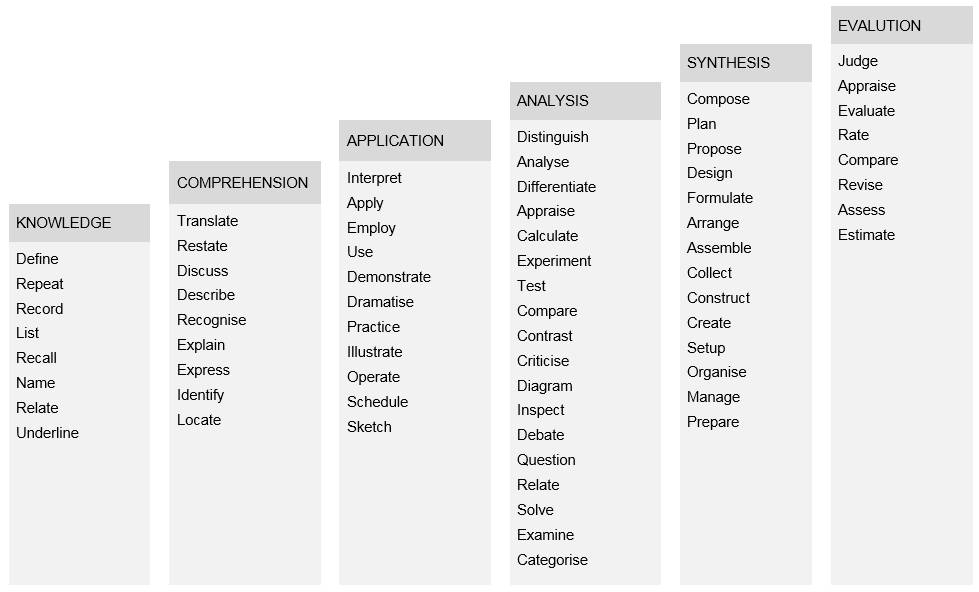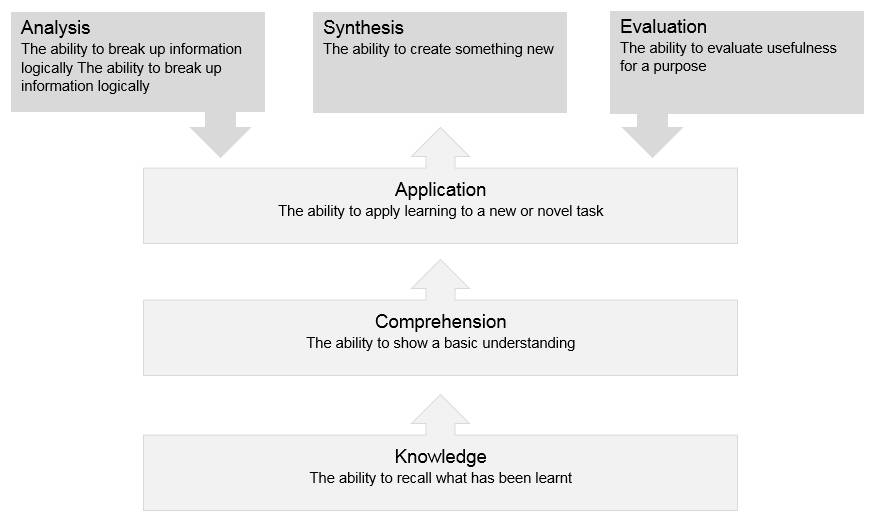Why Use Learning Outcomes?
Being clearer about what we want from our students helps us to make the important decisions such as:
- what we want them to know (knowledge and programme content)
- how we want them to learn it (teaching and learning strategies)
- how well they have learned it (assessment)
- how effective the programme has been (evaluation)
Bloom’s Taxonomy Simplified
The best known of these structured hierarchies or systems of classification is the well worn and well used one produced by Bloom and his collaborators back in 1955 (see Figure 1).

Figure 1: Bloom’s Taxonomy simplified
It is also worth considering elaborations of Bloom which may help when writing outcomes for different levels of an academic programme.

Figure 2: Interrelationships between Bloom’s cognitive levels
Writing Learning Outcomes
Following are useful suggestions worth considering when you are drafting your learning outcomes.
| Figure 3: Suggestions & considerations when writing learning outcomes | |
| 1. | Refer to University’s credit level descriptors and subject benchmarks |
|
|
| 2. | Think and plan strategically |
|
|
| 3. | Be clear about your priorities for your students learning |
Some examples on how important are the following for student learning;
|
|
| 4. | Ensure the outcomes are accessible |
|
|
| 5. | Be clear about the standards that learning outcomes describe |
|
|
| 6. | Use accessible and accurate language (Refer Figure 1 and 4) |
|
|
| Figure 4: When writing learning outcomes | |
| Avoid word like: | Consider using words like: |
|
|
